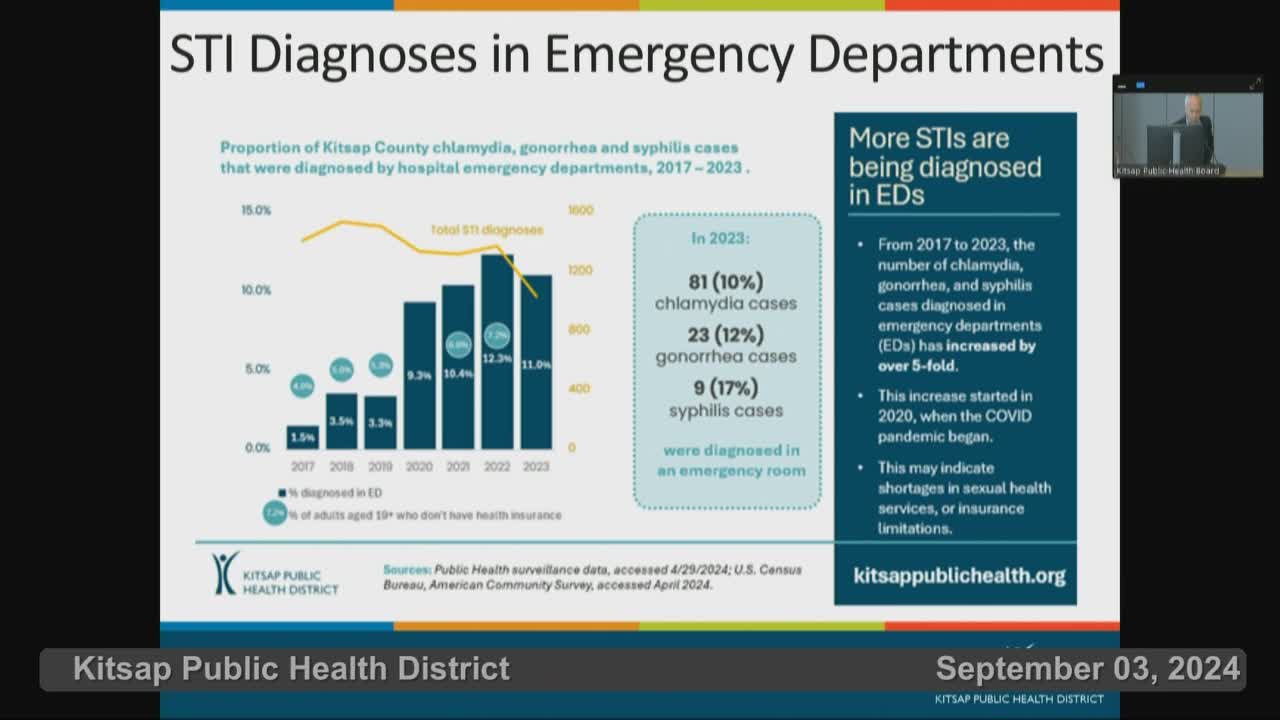Health care costs soar as affordability crisis deepens
September 03, 2024 | Kitsap County, Washington
This article was created by AI summarizing key points discussed. AI makes mistakes, so for full details and context, please refer to the video of the full meeting. Please report any errors so we can fix them. Report an error »

A recent government meeting highlighted the escalating costs of healthcare in Washington state, emphasizing the urgent need for reform. The discussions revealed that accessing care has become increasingly expensive, driven by factors such as limited access to primary care, inadequate funding for preventive services, and the closure of STI clinics. These issues disproportionately affect uninsured individuals and contribute to a growing burden of medical debt.
According to newly published graphs from the health care authority, personal healthcare costs—including deductibles and employer contributions—are rising at a rate that significantly outpaces personal income. In 2022, 62% of respondents in Washington reported experiencing affordability burdens related to healthcare, underscoring the economic inequities faced by middle and lower-income residents.
To address these challenges, the health care authority proposed several measures, including setting reimbursement levels for specific health services, capping out-of-pocket charges, and preventing further consolidation within the healthcare industry. The report also cited successful initiatives from other states, such as New Jersey's use of ARPA funds to eliminate $100 million in medical debt for over 50,000 residents and Rhode Island's legislation to prohibit medical debt reporting to credit bureaus.
The meeting concluded with a commitment to continue advocating for transparency and affordability in healthcare costs, alongside efforts to strengthen the healthcare workforce and improve funding for public health and preventive services. A memo detailing a six-month progress update on these initiatives was provided to attendees, with further updates expected in the future.
According to newly published graphs from the health care authority, personal healthcare costs—including deductibles and employer contributions—are rising at a rate that significantly outpaces personal income. In 2022, 62% of respondents in Washington reported experiencing affordability burdens related to healthcare, underscoring the economic inequities faced by middle and lower-income residents.
To address these challenges, the health care authority proposed several measures, including setting reimbursement levels for specific health services, capping out-of-pocket charges, and preventing further consolidation within the healthcare industry. The report also cited successful initiatives from other states, such as New Jersey's use of ARPA funds to eliminate $100 million in medical debt for over 50,000 residents and Rhode Island's legislation to prohibit medical debt reporting to credit bureaus.
The meeting concluded with a commitment to continue advocating for transparency and affordability in healthcare costs, alongside efforts to strengthen the healthcare workforce and improve funding for public health and preventive services. A memo detailing a six-month progress update on these initiatives was provided to attendees, with further updates expected in the future.
View full meeting
This article is based on a recent meeting—watch the full video and explore the complete transcript for deeper insights into the discussion.
View full meeting
